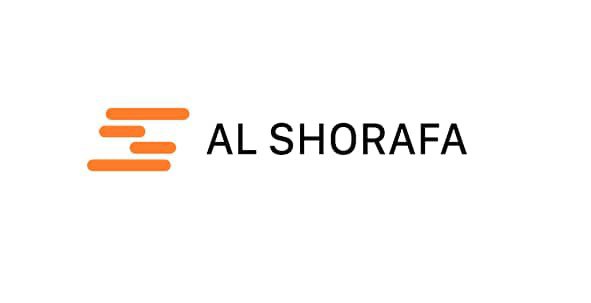There are two main types of court bonds in civil proceeding:
“court” or judicial bonds
Fiduciary bonds
Judicial Bonds
Court bonds are guarantees required by the courts at significant points in the litigation process.
For example, one party to the lawsuit may be granted a privilege before the final judicial determination is made. In which case, the court may require a bond of this party in the case it is found later that this party was not entitled to this privilege and damages were incurred by the other party. The court bond would protect that party from losses sustained to that party as a result of the court’s having temporarily granted the privilege.
Court Bonds are divided into two main classifications:
- Plaintiff Bonds
- Defendant Bonds
The degree of hazard is generally much greater for defendants’ bonds. As a result the surety’s underwriting requirements are much stricter for defendants’ bonds.
Common Plaintiffs’ Bonds:
Attachment Bond: State laws provide for the attachment of a debtor’s property under certain circumstances and this procedure requires an attachment bond. Attachments include the following:

The act or process of seizing property
A judicial order, which may be: call a writ or summons
Bringing the property under the court’s custody to secure the satisfaction of the judgment
The attachment may cover a specific asset or all of the defendant’s property within the court’s jurisdiction. When the property is seized under these circumstances, the sheriff or marshal usually holds it until the suit is settled. Depending on the outcome of the case, the property will be used to satisfy the judgment favoring the plaintiff or it will be returned to defendant if defendant prevails. If defendant wins the case, the plaintiff supported by the bond is liable for any damages.
Replevin Bond: A plaintiff provides a Replevin Bond to the court when claiming ownership of property in the defendant’s hands and suing to get property back. In an attachment, the property in question belongs to the defendant. In a replevin action, on the other hand, the plaintiff claims constructive ownership and entitlement to possession.
Replevin Bonds are frequently required in suits concerning conditional sales contracts that involve the sale of an article or goods on an installment plan. Under the terms of most of those agreements, the seller retains the legal title to the property that is the subject of the sale until the buyer pays for it. The seller’s title in the property is usually a perfected security interest and is often referred to as an equitable interest or equitable title until the buyer pays for the goods.
If buyer defaults, the seller can reclaim the property by securing a Writ of Replevin – and a Replevin Bond may be required. The replevin bond guarantees that the plaintiff will return the property to the defendant in the same condition as when received if the resolution favors the defendant and indemnifies the defendant against damages that the defendant may have suffered.
Injunction Bond: An injunction is a court’s prohibitive order to a defendant to refrain from performing an act that would be detrimental to the plaintiff’s interest. Forces the plaintiff to pay for any damages caused by an improper injunction filed against the defendant. An injunction is usually the only way to protect the plaintiff ‘s interest and to prevent irreparable harm. To obtain relief, the plaintiff must file a bond to indemnify the defendant against damages suffered from the injunction should the court decide the injunction was wrongful.
An injunction bond is typically more common but more hazardous than other types of plaintiff bonds. They are typically involuntary and affect rights of considerable worth or value.
Temporary Restraining Order Bonds (TRO Bonds): A Temporary Restraining Order is similar to an Injunction, the principal difference is that the period of relief under a TRO is much shorter than the period of relief under a preliminary or permanent injunction. TROs unlike injunctions are not available under every jurisdiction. Where available, they provide immediate injunctive relief for the plaintiff pending hearing on a motion for a preliminary injunction.
Garnishment Bond: A Plaintiff uses a Garnishment Bond to secure a claim before final judgment by attaching a defendant’s property or monetary credits that are under a third party’s control. The third party, when properly notified, must hold the property pending the outcome of the suit. This action is frequently used to attach or garnish, bank accounts or amounts payable to the defendant by a third party. The bond ensures that if the plaintiff prevails in the lawsuit, the defendant’s property will be accessible to the plaintiff. Money being held by a third party – the garnishee – is returned to the defendant if it is so required.
Appeal Bond: Guarantees that if a lower court’s decision is appealed, the party filing the appeal will pursue without unnecessary delay and that if the appeals court affirms the lower court’s decision that the principal will satisfy the judgment plus interest and costs. This bond is one of the most hazardous of court bonds.
Lis Pendens Bond: Lis Pendens means litigation pending. It is a notice filed in court to provide recorded notice than the property described is currently subject to a lawsuit. While it does not create a claim in the property, as does a recorded mortgage, for example, it does serve to put a practical cloud on the title and will be uncovered by any search, thereby negatively affecting any subsequent transfer of the property. In many cases the court will require a bond to be filed with the notice to protect the defendant against an improper filing or bad faith. The amount of the bond will be determined by the particulars of the case and will assure payment of any court costs, legal fees, and damages the defendant may incur as a result of the filing by the plaintiff.
Common Defendants’ Bonds
Release Attachment Bond: This is a counter bond and is the defendant’s counterpart to a plaintiff’s attachment bond. It nullifies a plaintiff’s legal maneuver to attach a defendant’s property by serving as additional security for a claim, pending resolution of a court case.
Counter-Replevin Bond: A counter bond that a defendant may employ to regain possession of property taken or replevied by the plaintiff. The bond guarantees that the defendant will surrender property to satisfy any final judgment and that the property will be in the same condition as it was when the defendant recovered it from the plaintiff.
Dissolve Injunction Bond: Suspends the operation of an injunction. Indemnifies the plaintiff against damages suffered as a result of the action. These are hazardous bonds to write because of relief sought.
Release of Garnishment Bond: By posting this bond, a defendant can lift the restrictions placed by a plaintiff on the defendant’s property. Filing this bond allows the defendant to enjoy the control of the property exercised before the garnishment was filed by the plaintiff.
Appeal Bond: After a case has been tried in court and judgment has been rendered, the losing party may wish to appeal that decision to a higher court. Ordinarily an appeal bond must be filed. This prevents the successful party in lower court from executing or collecting on this judgment. The bond takes the place of this judgment. These bonds are considered very hazardous and are considered outright financial guarantees.
Supersedeas Bond: A defendant gives a supersedeas bond to prevent an officer of the law from executing on a judgment, pending appeal to a higher court. Such bond supersedes or stands in the place of the judgment during the appeal process. Under the law, this bond contains certain technical distinctions not found in the usual appeal bond although the underwriting approach is the same.
Release of Lien/Transfer of Lien Bond: Among its provisions is the allowance for a bond to be posted as a substitute for a properly filed lien. As such, the bond effectively becomes the property that has been liened and, as a result, the property is cleared of encumbrances which could impede its use or subsequent transfer of title. The statute is specific in determining the amount of bond required to release a lien and, once in effect, the bond will remain in force throughout the life of the lien as described by the statute. These bonds are normal practice in every state although the law and exact procedure may vary some.
Fiduciary Bonds (sometimes known as Probate Bonds)
Fiduciary bonds used in civil proceedings are often called probate bonds. These Probate Bonds are used under a wide range of circumstances, including the administration of estates or the management of affairs of trusts or wards. These bonds guarantee that the interests of those concerned will be properly safeguarded.
There are generally four categories of fiduciary bonds, they are:
Probate Bonds - which are filed in probate courts and include: Administrator Bonds, Personal Representative Bonds, Executor Bonds, Trustee Bonds, Guardianship Bonds (for minors or incompetents), and Conservator Bonds (for incompetents’ estates).
Bonds filed in equity courts - which include: Receivers Bonds (Federal or State courts), Assignee Bonds (for the benefit of creditors and trustees) and Commissioners Bonds (for the sale of real estate).
Bonds filed in the Singapore District Courts under the Federal Bankruptcy Act - which are filed in various types of bankruptcy proceedings and include: Examiners Bonds, Trustee Bonds and Receivership Bonds.
Miscellaneous Fiduciary Bonds - which include: Refunding Bonds, Open Estate Bonds, Bonds Covering Decedents’ Debts and Bonds in Lieu of Probate.

